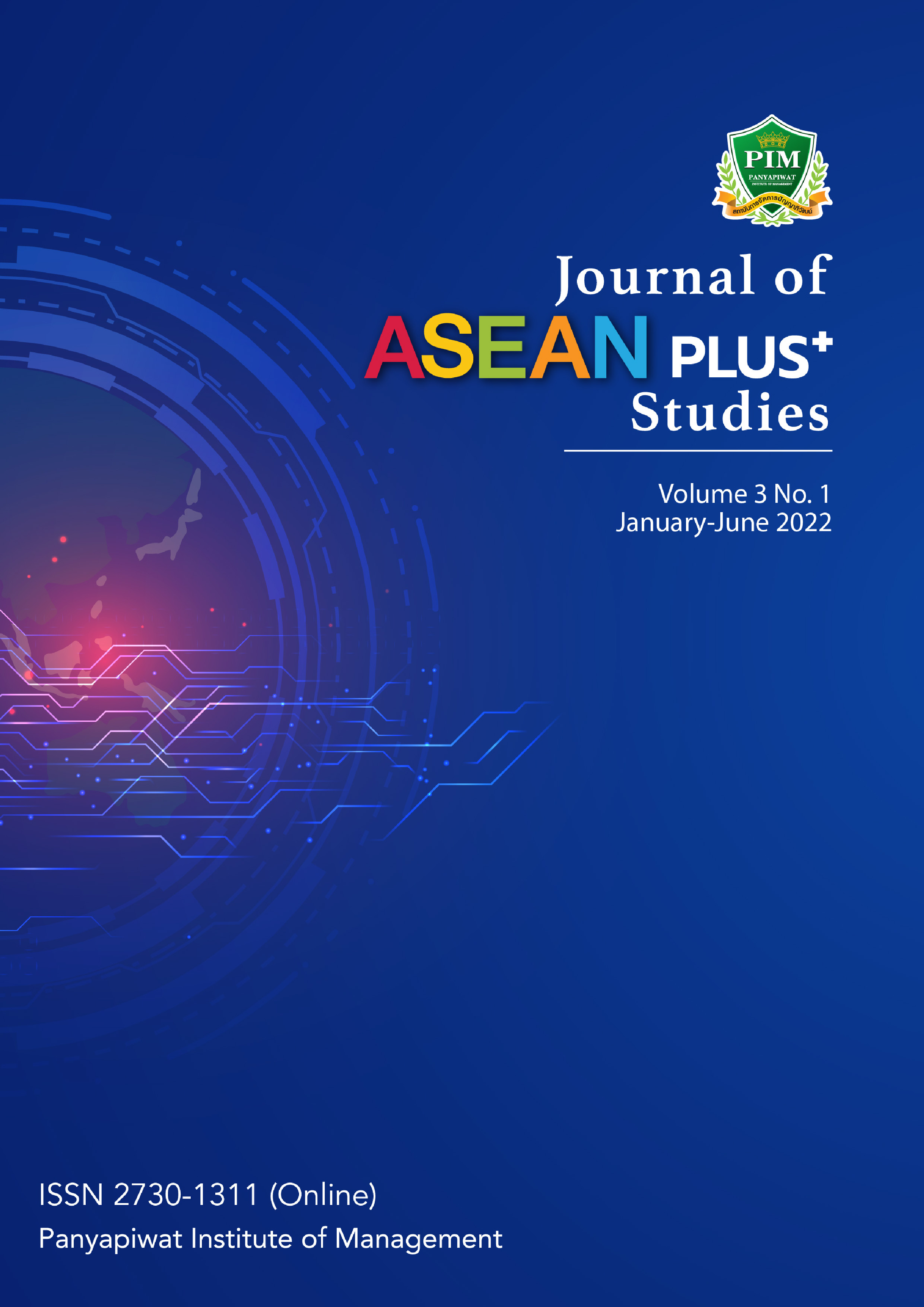Thailand and ASEAN Centrality Geopolitics
Keywords:
Thailand, ASEAN, Geopolitics, Indo-PacificAbstract
The paper will argue that although Thailand has its own national geostrategic framework ranged from (1) exploiting “buck passing” and buffer states with “mini” proxy warfare (2) offshore balancing, and (3) international organization like UN, whereas ASEAN is a new regional architecture had been developed quietly and continually. But with natural development of ASEAN it will fit with the future geostrategic framework of Thailand, albeit a requirement to get the deeper rethink of ASEAN architecture to address the coming challenges.
References
Beckley, M. (2018). The Power of Nations: Measuring What Mattes. International Security, 43(2), 7-44.
Beckley, M. (2020). China’s Economy is Not Overtaking America’s. Journal of Applied Corporate Finance, 32(2), 20-23.
Beckley, M., & Brands, H. (2020). Competition with China Could be Short and Sharp: The Risk of War is Greatest in the Next Decade. Retrieved April 21, 2022, fromhttps://www.foreignaffairs.com
/articles/united-states/2020-12-17/competition-china- could-be-short-and-sharp
Blackwill, R. D., & Tellis, A. J. (2015). Revising U.S. Grand Strategy Toward China. New York: The Council on Foreign Relations Inc.
Caballero-Anthony, M. (2014). Understanding ASEAN’s Centrality: Bases and Prospects in an Evolving Regional Architecture. The Pacific Review, 27(4), 563-584.
Centre for Economics and Business Research (CEBR). (2021). World Economic League Table 2022: A World Economic League Table with Forecasts for 191 Countries to 2036. Retrieved April 21, 2022, from https://cebr.com/wp-content/uploads/2021/12/WELT-2022.pdf.content/upload2021/12/WELT-2022.pdf
Chen, M., Zhang, H., Liu, W., & Zhang, W. (2014). The Global Pattern of Urbanization and Economic Growth: Evidence from the Last Three Decades. PLoS ONE, 9(8), 1-15.
Dhiravegin, L. (1974). Thailand’s Foreign Policy Determination. The Journal of Social Science, 11(4), 37-65.
Echavarria, P. R., & Arias, M. A. (2017). Tigers, Tiger Cubs, and Economic Growth. Retrieved April 19, 2022, from https://shorturl.asia/lYi4I
Embassy Bangkok, Wikileaks. (2007a). Thai MFA on Burma, China Views. Retrieved April 18, 2022, from https://wikileaks.jcvignoli.com/cable_07BANGKOK5234
Embassy Bangkok, Wikileaks. (2007b). MFA Permsec on Burma, Bilateral Issues. Retrieved April 18, 2022, from https://wikileaks.jcvignoli.com/cable_08BANGKOK835
Emmers, R. (2017). ASEAN minus X: Should This Formula be Extended? RSIS Commentary. Retrieved April 20, 2022, from https://www.rsis.edu.sg/rsis-publication/cms/co17199-asean-minus-x-should-this-formula-be-extended/
Huang, K. (2020). Institutional Change in ASEAN: A Conceptual Analysis of the ASEAN Political-Security Community. Defence Sciences Review, (10), 58-77.
Jetschke, A. (2011). Is ASEAN a Provider of Regional Security Governance? Retrieved April 8, 2022, from https://www.southeastasianstudies.unfreiburg.de/documents/occasional-paper/op4.pdf
Jung, S. C., Lee, J., & Lee, J-Y. (2021). The Indo-Pacific Strategy and US Alliance Network Expandability: Asian Middle Powers’ Positions on Sino-US Geostrategic Competition. Indo-Pacific Region. Journal of Contemporary China, 30(127), 53-68.
Kirchick, J. (2017). The End of Europe: Dictators, Demagogues, and the Coming Dark Age. London: Yale University Press.
Kislenko, A. (2002). Bending with the Wind: The Continuity and Flexibility of Thai Foreign Policy. International Journal, 57(4), 537-561.
Kislenko, A. (2020). Thailand’s Foreign Policy. Routledge Handbook of Contemporary Thailand. New York: Routledge.
Klausner, W. J. (1993). Reflections on Thai Culture. Bangkok: The Siam Society Under Royal Patronage.
Kletzer, C. (2006). Alexandre Kojève’s Hegelianism and the Formation of Europe. Cambridge Yearbook of European Legal Studies, 8, 133-151.
Koga, K. (2018). ASEAN’s Evolving Institutional Strategy: Managing Great Power Politics in South China Sea Disputes. The Chinese Journal of International Politics, 11(1), 48-80.
Kojève, A. (1945). Outline of a Doctrine of French Policy by Alexandre Kojève. Retrieved April 19, 2022, from https://shorturl.asia/1HB9h
Mearsheimer, J. J. (2014). The Tragedy of Great Power Politics. New York: W.W. Norton & Company.
Mueller, L. M. (2021). Challenges to ASEAN Centrality and Hedging in Connectivity Governance—Regional and National Pressure Points. The Pacific Review, 34(5), 747-777.
Parameswaran, P. (2022). US in Southeast Asia: Striking a New Balance? Retrieved April 21, 2022, from https://www.rsis.edu.sg/wpcontent/upload/2022/02/CO22014.pdf
Poole, T. (2015). Reason of State: Law, Prerogative and Empire. Cambridge: Cambridge University Press.
Poonkham, J. (2022). A Genealogy of Bamboo Diplomacy: The Politics of Thai Détente with Russia and China. Australia: ANU Press.
Romer, P. (1990). Endogenous Technological Change. Journal of Political Economy, 98(5), 71-102.
Seah, S. et al. (2022). The State of Southeast Asia: 2022 Survey Report. Singapore: ISEAS-Yusof Ishak Institute.
The White House. (2022). Indo-Pacific Strategy of the United States. Retrieved April 20, 2022, from https://shorturl.asia/cSkNv
Weatherbee, D. E. (2009). International Relations in Southeast Asia: The Struggle for Autonomy (2nd ed.). Singapore: ISEAS Publish
Wikipedia. (n.d.). 1954 Geneva Conference. Retrieved April 20, 2022, from htts://en.
wikipedia.org/wiki/1954_Geneva Conference
Zawacki, B. (2021). Thailand: Shifting Ground between the US and a Rising China. London: Zed Books.






